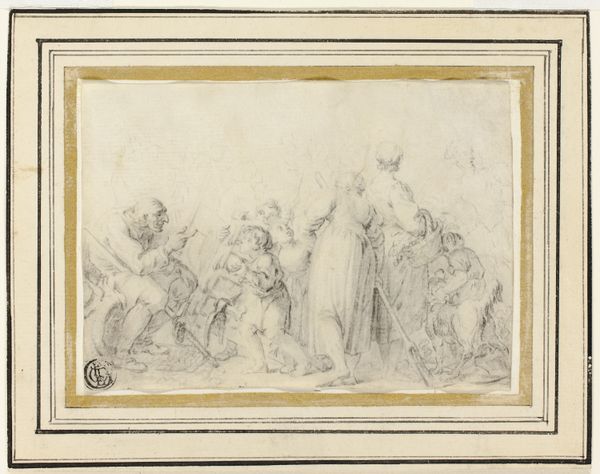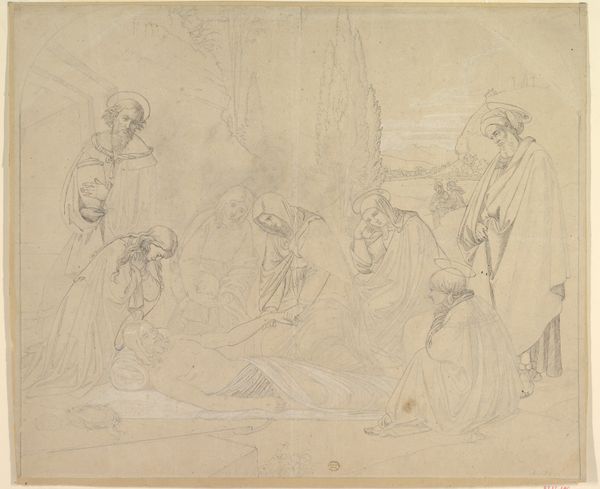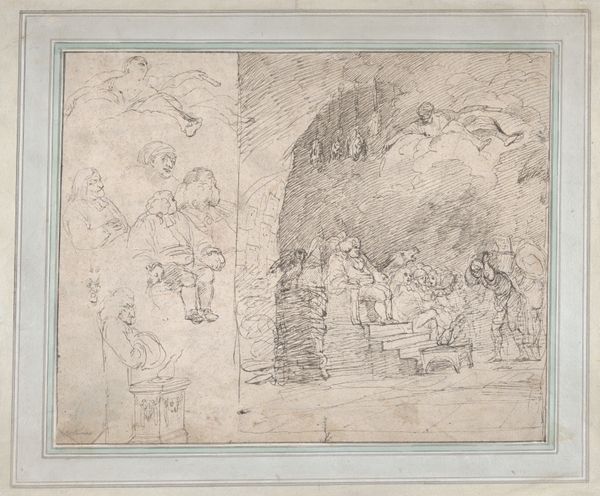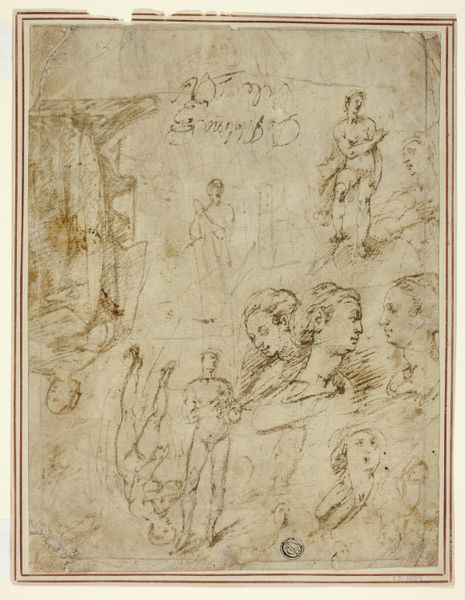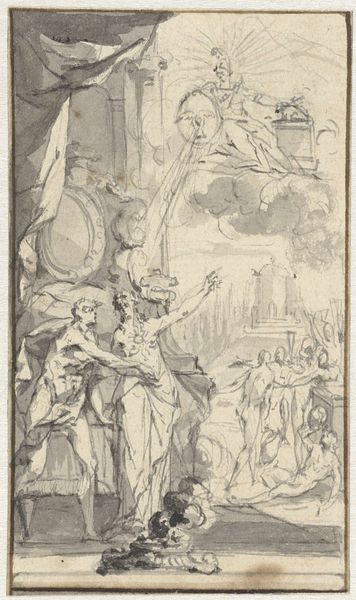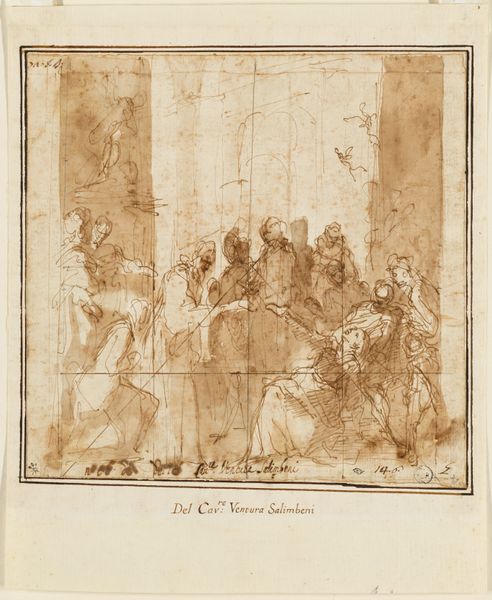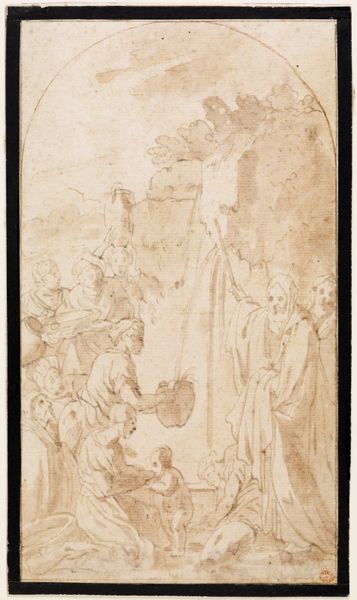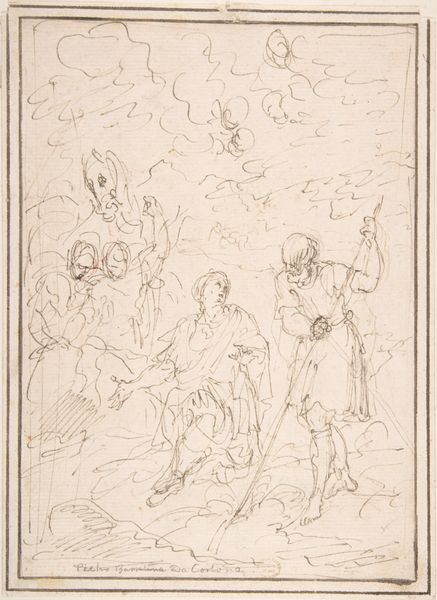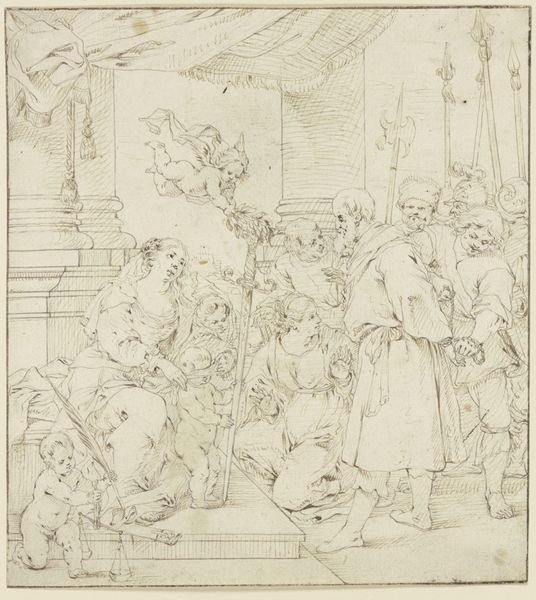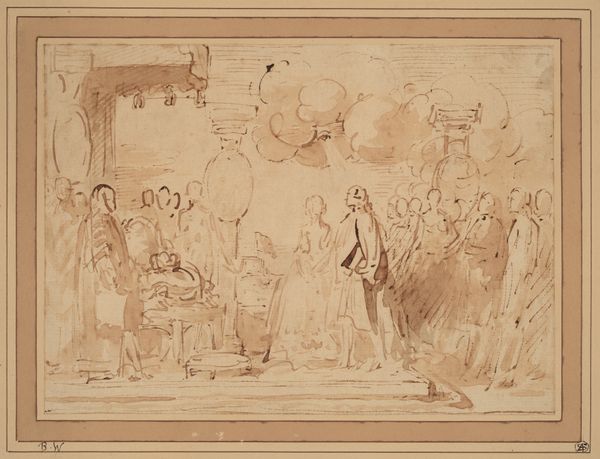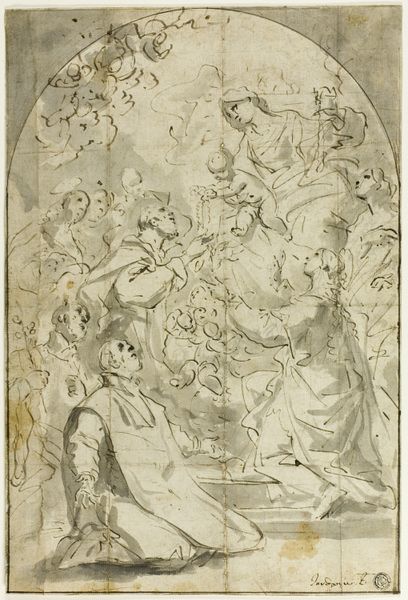
Members of a Monastic Order Carrying the Cross for Christ to Heaven 1550 - 1657
0:00
0:00
drawing, ink
#
drawing
#
narrative-art
#
figuration
#
11_renaissance
#
ink
#
cross
#
history-painting
#
monochrome
#
christ
Dimensions: sheet: 12 1/4 x 11 1/4 in. (31.1 x 28.6 cm)
Copyright: Public Domain
Curator: This ink drawing, "Members of a Monastic Order Carrying the Cross for Christ to Heaven", is attributed to Giovanni Andrea de Ferrari and dates from 1550 to 1657. What's your first take? Editor: There's a stark beauty here, even with the rather rudimentary rendering. The monochromatic palette, the ascent into the heavens... it feels strangely somber yet hopeful. Curator: It certainly evokes strong feelings. It's fascinating to consider this work within the socio-political landscape of its time. Religious orders wielded significant power. I wonder, what was de Ferrari’s position on the issues? Editor: Well, the act of carrying the cross is itself loaded with symbolic weight, right? This idea of collective burden-bearing, and what that means for individuals existing within the framework of religious doctrine, really makes one reflect. The positioning of the Christ figure, looming overhead, seems to question our traditional ideas surrounding that visual dynamic. Curator: Absolutely. And how institutions utilized imagery to cement narratives of salvation, faith, obedience. It presents the order almost as intermediaries, lifting the earthly burden towards divinity. Editor: It also poses questions about community. About who carries what weight. In some ways the monks may be lifting the cross towards heaven, but simultaneously supporting that entire construct here on Earth. What kind of personal fulfillment did individuals within this type of religious order seek? Curator: That’s the historical puzzle. These monastic orders played key social roles. Ferrari probably made this sketch to later elaborate, to gain the recognition of an elite clientele and get a larger, maybe public, commission. Editor: Right, who the intended audience might be really dictates our entire perspective here, and the overall power dynamics in play. A sketch like this can be a microcosm of such broader social dynamics, reflecting themes of labor, devotion, hierarchy. Curator: By seeing art as more than aesthetic objects, as pieces of socio-cultural fabric, we appreciate history more fully. Editor: Exactly. And in turn, hopefully learn ways to restructure and redefine our present, even when regarding art from the distant past.
Comments
No comments
Be the first to comment and join the conversation on the ultimate creative platform.

